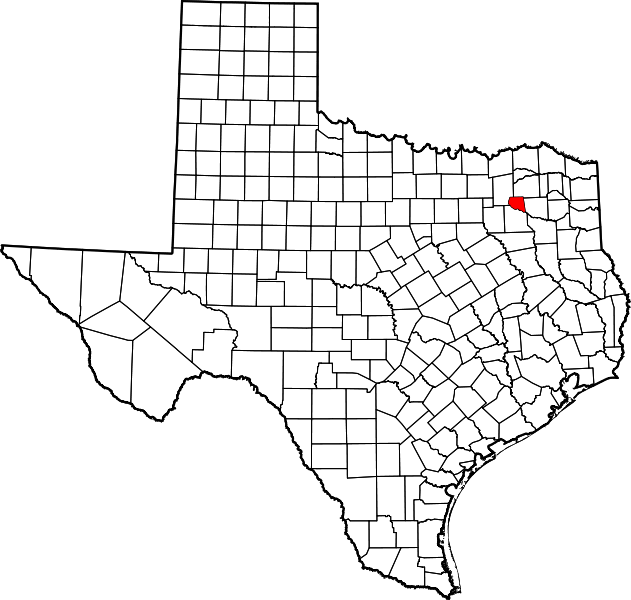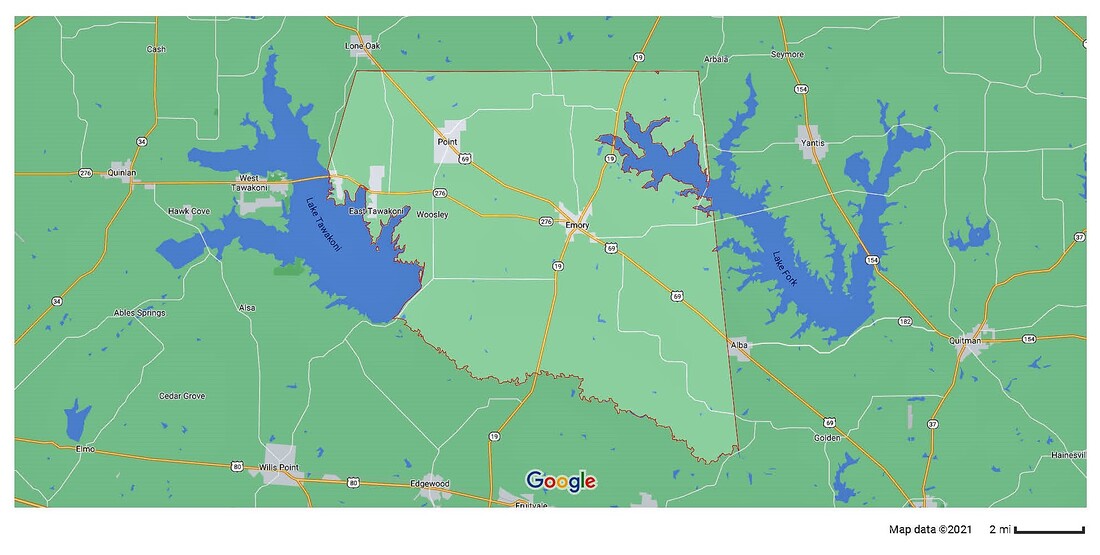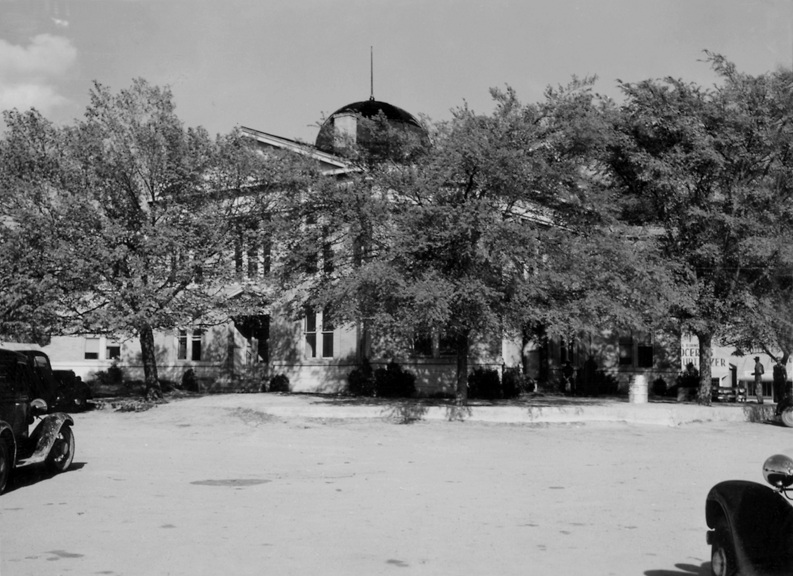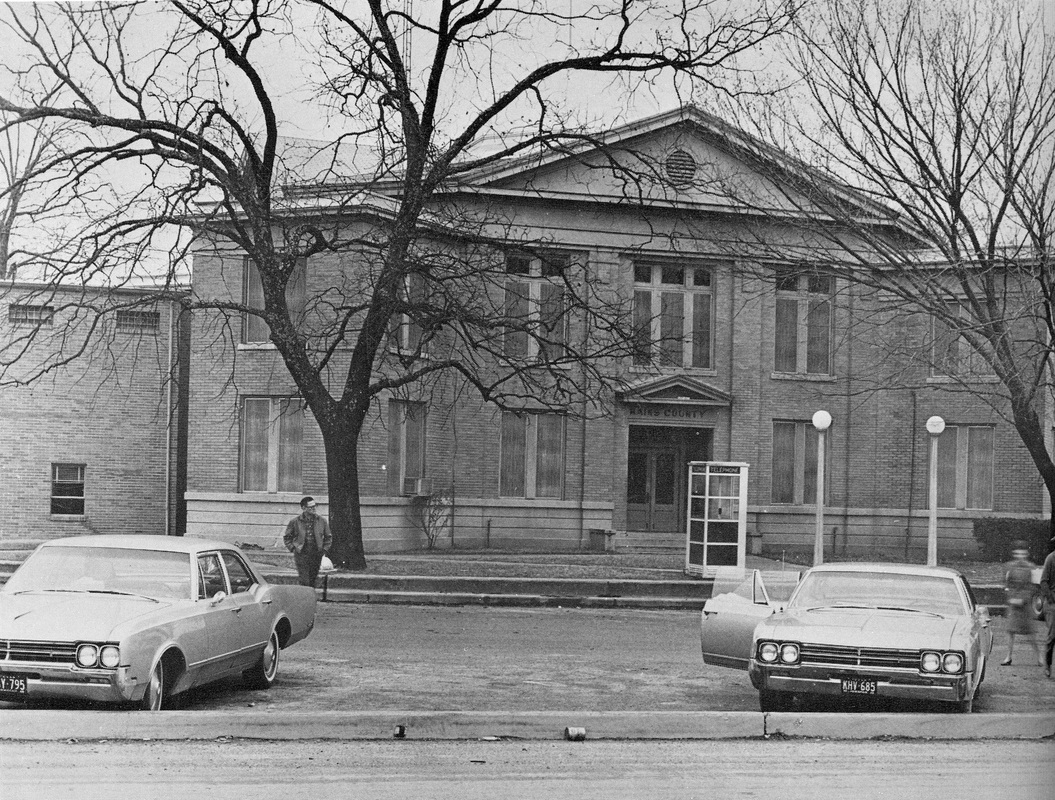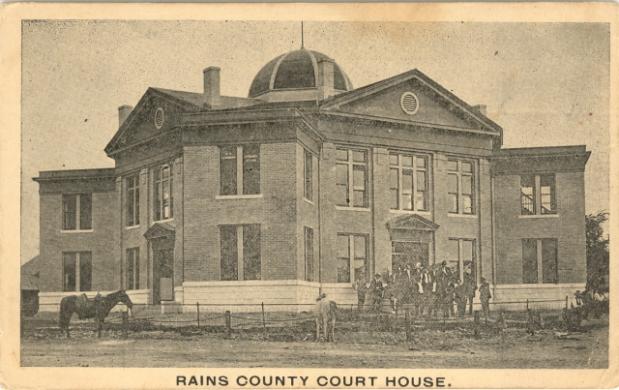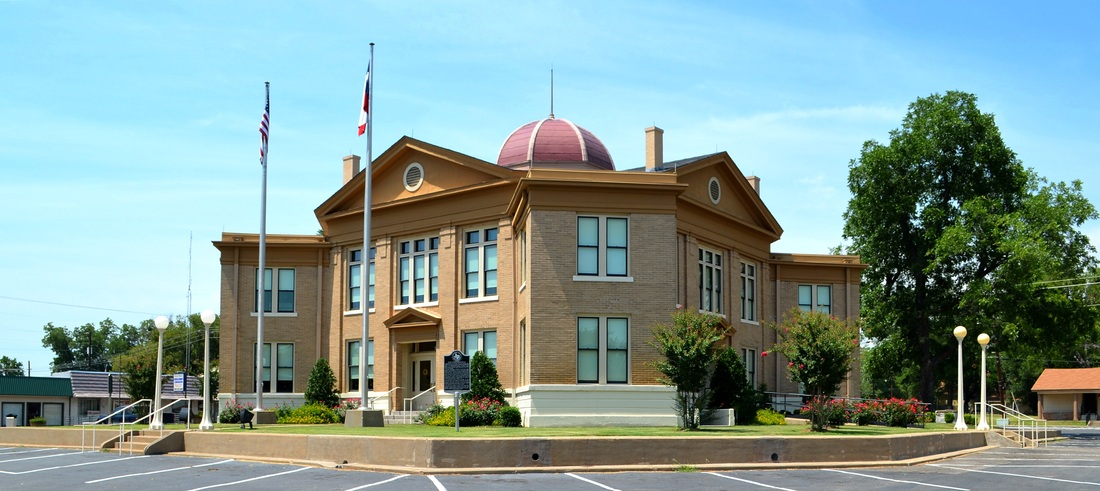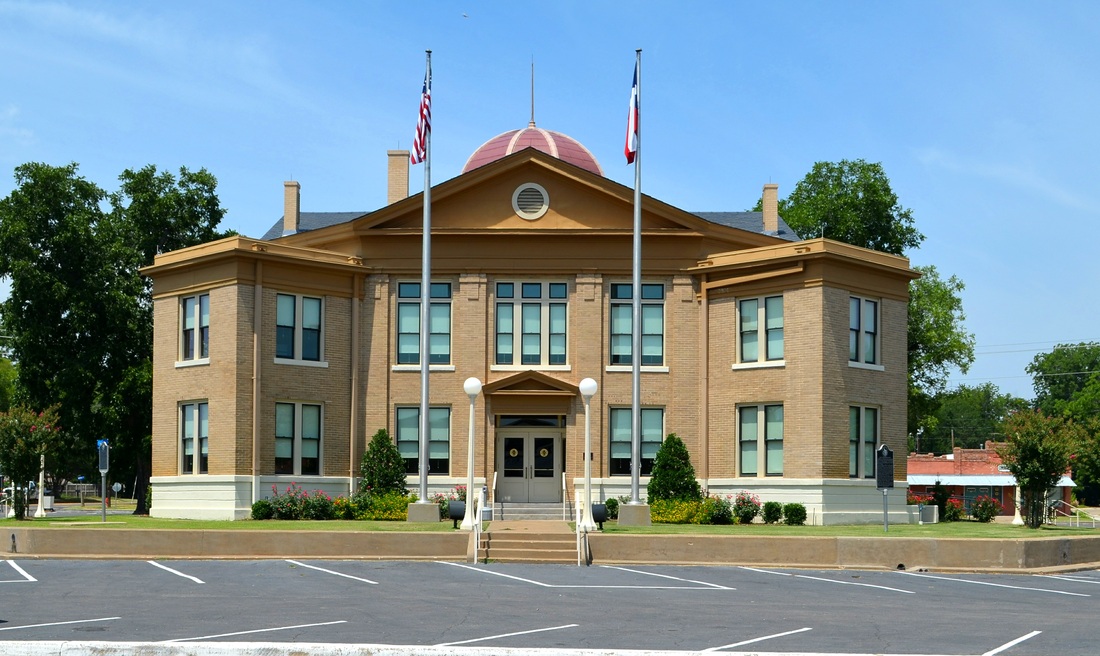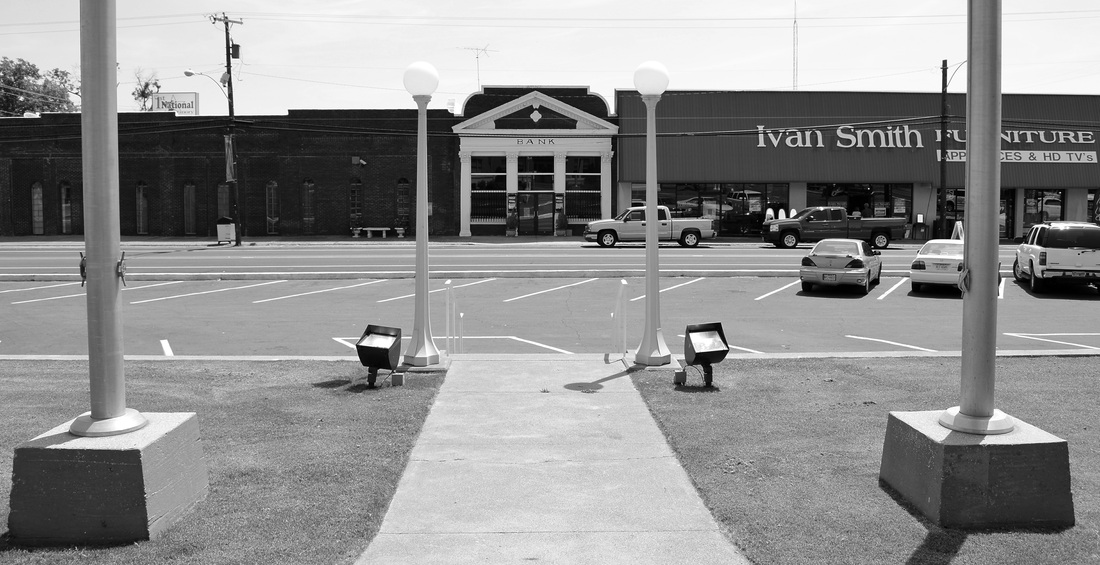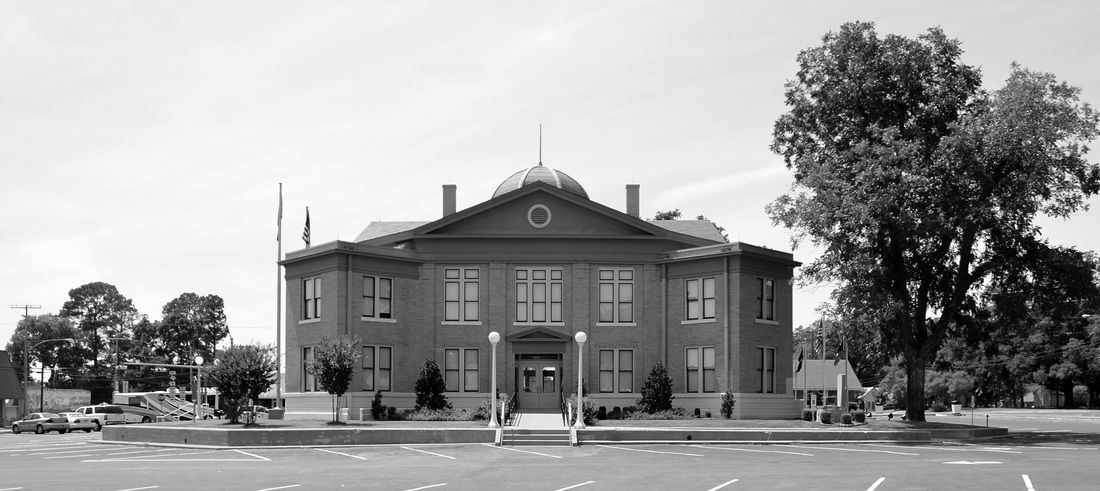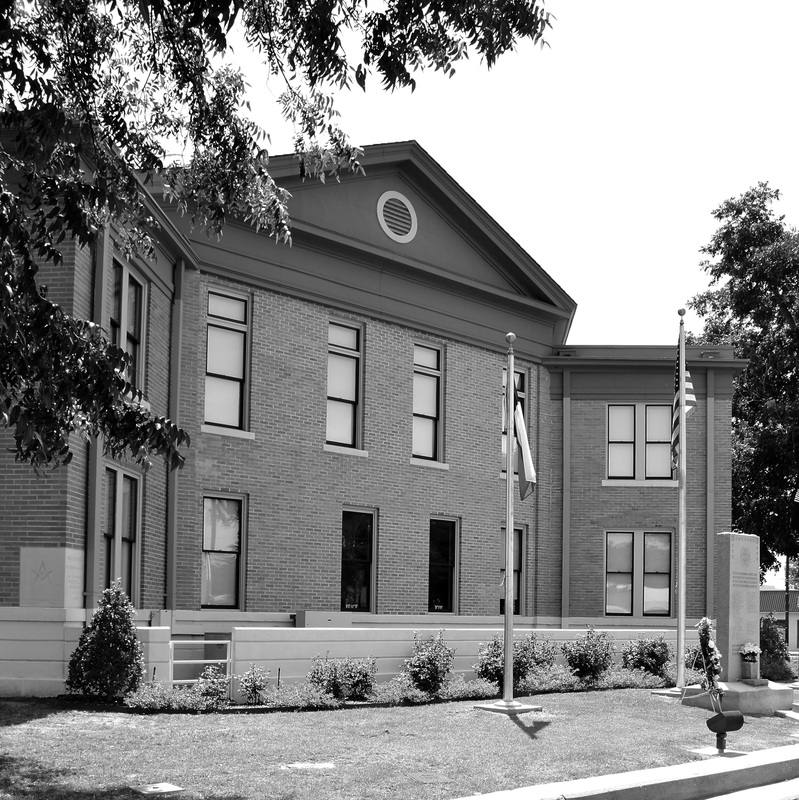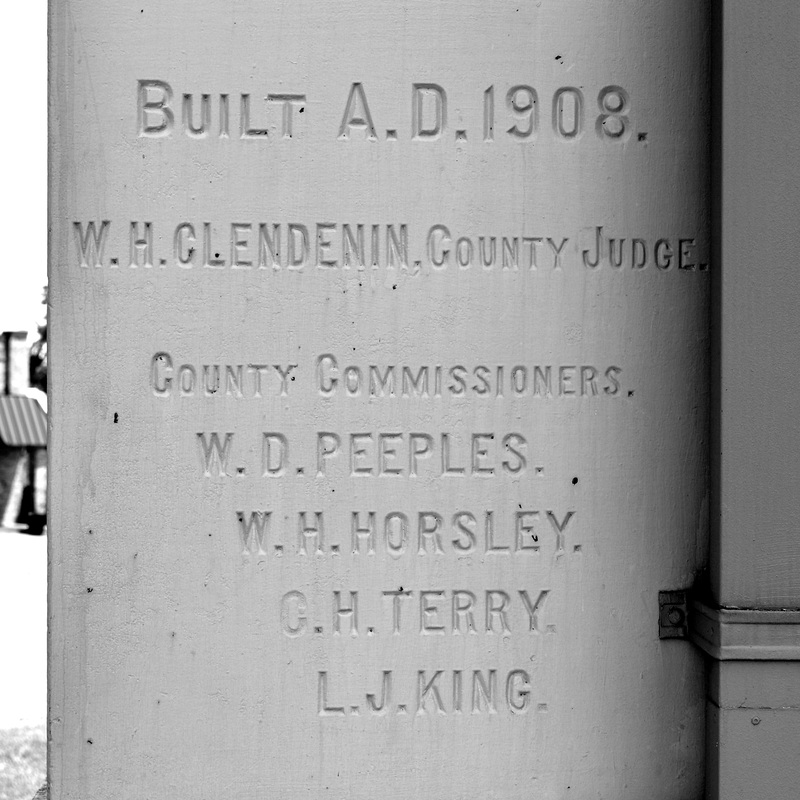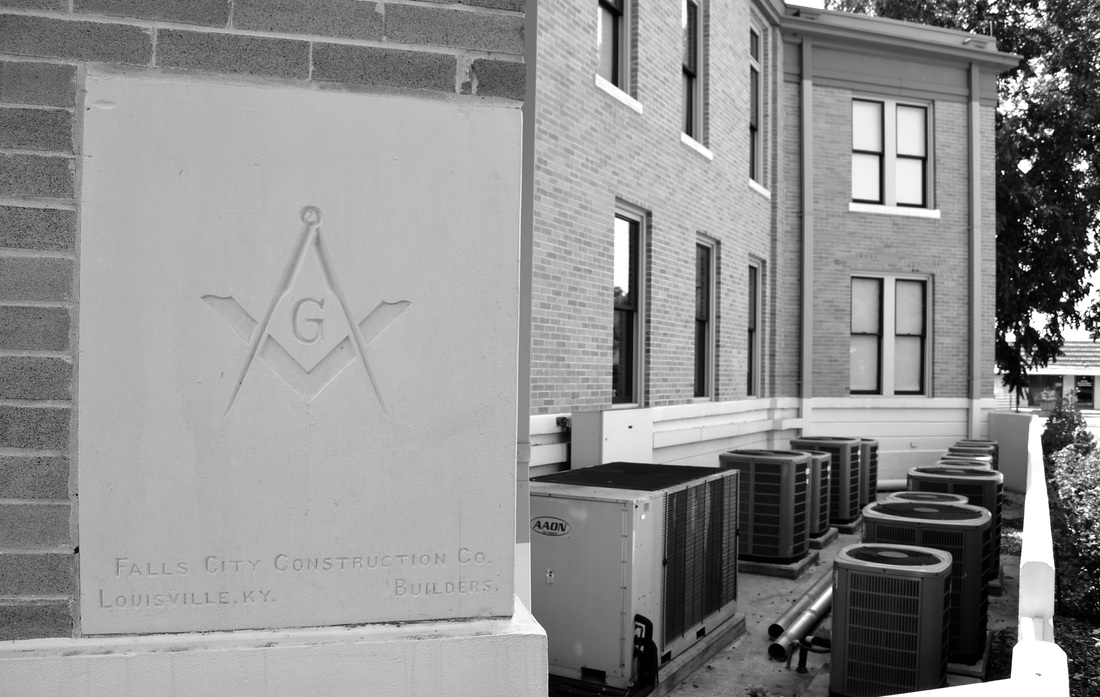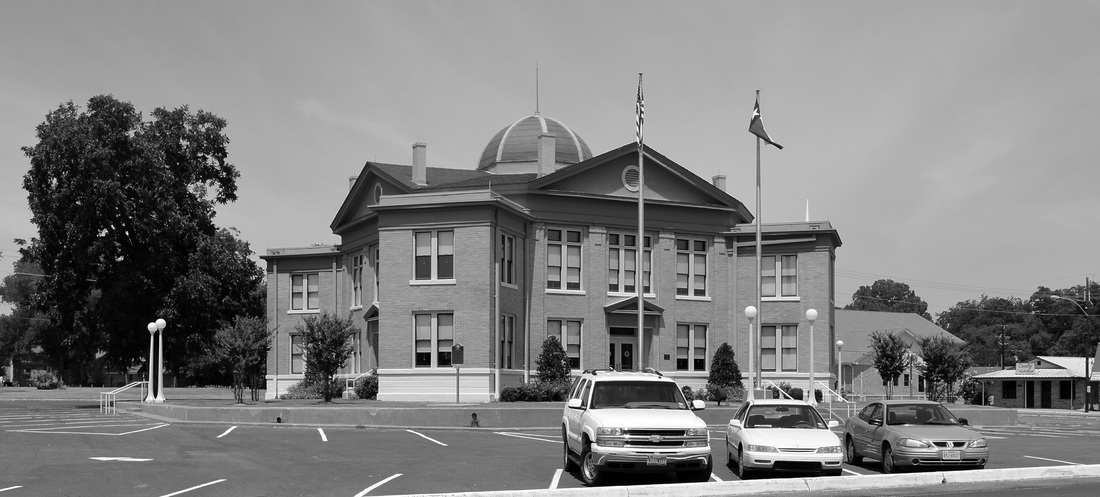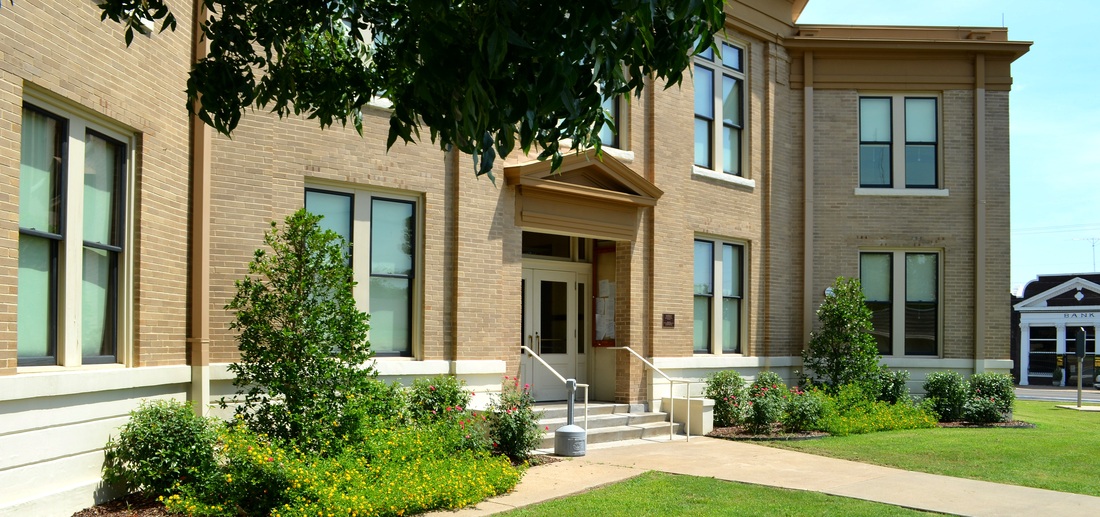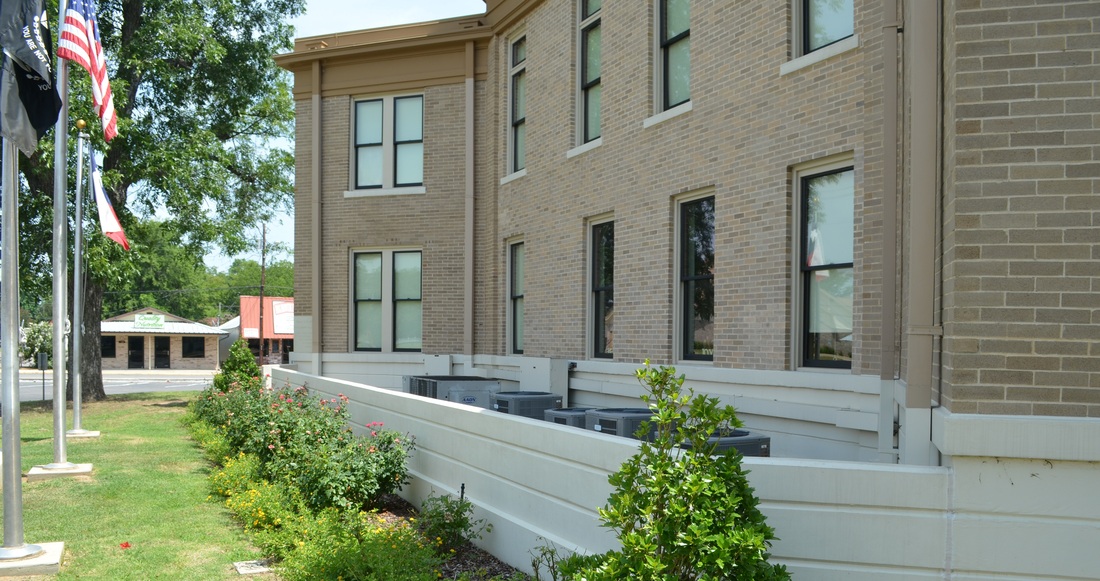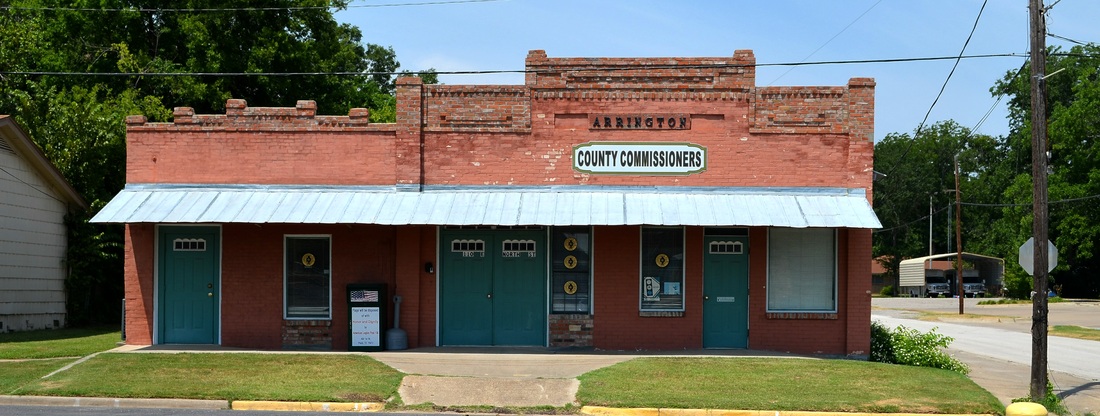185 of 254 Rains County Courthouse, Emory, Texas. County Population: 10,914
|
"With a total area of only 258.8 square miles, Rains County is one of the smallest counties in the state, and more than 10 percent of it has been under water since the construction of Lake Tawakoni and Lake Fork Reservoir.
"After 1850 most of the area that later became Rains County fell within the boundaries of Wood County, which was represented in the state Senate by Emory Rains, an early pioneer who had served in the Congress of the Republic of Texas. In 1866 Rains lobbied for the bill that established Rains County. On June 9, 1870, the legislature approved 'an Act to create and provide for the organization of the County of Rains.' The bulk of the new county was taken from Wood County. The western section, including the sites of the first settlements, came from Hunt County, and a narrow strip of land in the north was carved from Hopkins County. "The act provided that the citizens should choose a county seat, to be named Emory. Springville, the largest and most centrally located community, was designated the temporary place of business for the five appointed commissioners and was later selected as the permanent county seat and renamed Emory." Steven R. Davis, "RAINS COUNTY," Handbook of Texas Online Rains County is one of three Texas counties whose seat is the first name of the county's namesake. (See Borden and Jones counties.) I visited Rains County and photographed the courthouse in Emory on Saturday, July 13, 2013. |
Rains County Courthouse 1908Designed by Andrew J. Bryan of St. Louis, the "courthouse is a variation of Classical Revival form, featuring a square plan with square projecting wings at each corner that angle 45 degrees from the overall alignment. The pro-jecting wings are one room deep and two stories high, providing additional office space and contributing to a panoramic view of the courthouse from the pedestrian level. The exterior has been altered with the addition of a two-story jail and office wing on the north side, added in 1952." (see the photograph below) From the National Register narrative
The Rains County courthouse was restored under the Texas Historic Courthouse Preservation program in 2008-9. Thankfully, the restoration included the removal of the 1952 addition. Andrew Bryan designed a similar neo-classical revival courthouse for Fisher County in west Texas. (It was demolished in the 1970's.) |
The Round VIII Texas Historic Courthouse Preservation Program grant recipients were announced on April 30, 2014 by the Texas Historical Commission at its quarterly meeting. Rains County: $14,870 grant award for small remedial repairs to windows to address water intrusion.
